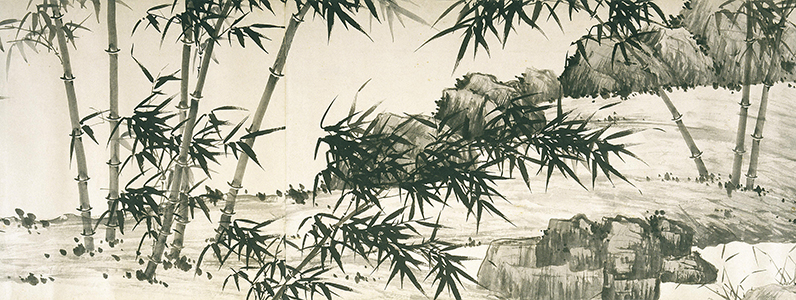Spring Is in the Air: Xia Chang
Please come on spring, that’s what I say! And what better way to anticipate the blooming and blossoming than a gorgeous impression of early spring?
 |
| Xia Chang (1388–1470, China), Bamboo Under Spring Rain, detail, ca. 1460. Ink on paper, section of a handscroll, overall size 20 7/8" x 31' (53 x 947 cm). © 2021 Philadelphia Museum of Art. (PMA-2741) |
Xia Chang was a court official under Ming dynasty (1368–1644) emperor Zhu Qiyu (reigned 1449–1457). He was also an amateur painter and calligrapher. Xia expanded on the painting style of Wang Fu (1362–1416), a calligrapher, poet, and artist who was renowned for his paintings of bamboo in an uninhibited style.
Subsequently, Xia became renowned for his paintings of bamboo, and his style was influential throughout the Ming and Qing (1644–1912) dynasties. He applied calligraphy techniques according to the precepts of leading Southern Song painter Zhao Mengfu (1254–1322), painting bamboo stalks with the seal-script style and twigs in the cursive-script style.
The image pictured here is a section of a very long handscroll measuring more than 30 feet (9 meters) long. It is viewed one section at a time, unrolling the scroll from right to left. The vantage point is unusually low, so that the viewer can revel in the textures of the moss on the riverbank, as well as the rough textures of the rocks. Bamboo was symbolic of qualities valued by the amateur scholar painters: supple and elegant, yet strong and unbending.
Ming painting continued the tradition of professional painters and gentleman/scholar (literati) amateur painters. Many artists copied the works of past artists, while still others produced bodies of work in unique iconography of traditional subject matter. The new Ming rulers established guidelines for the return to traditional painting, wherein Confucianism was emphasized.
Starting in the 1330s, there were floods and famine that lasted 15 years in the Yellow River valley. Uprisings were frequent, and in 1368 the Mongols of the Yuan Dynasty (1280–1368) were overthrown by the Ming. The Ming ultimately moved the capital to Beijing to protect it from the Mongols who had fled beyond the Great Wall. The shock of Mongol rule caused the Ming dynasty to look back to the artistic accomplishments of the Han (206 BCE–220 CE), Tang (618 –907), and Song (960–1279) dynasties. The bitter resentment of the foreign occupation and foreigners in general caused Chinese painting to turn inward to past styles.
Artists of this period were encouraged to return to the precepts of painting as established by Zhao. Large-scale landscapes, flower-and-bird compositions, and figural narratives were particularly favored as images that would glorify the new dynasty and convey its value in returning China to its traditions.
Correlations to Davis programs: A Personal Journey 2E: 5.5; Exploring Painting: Chapter 11


Comments